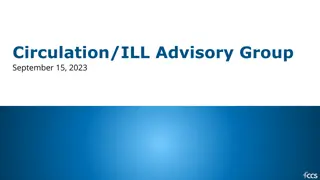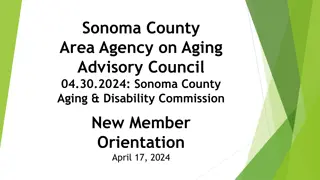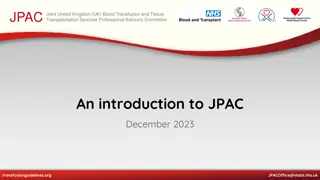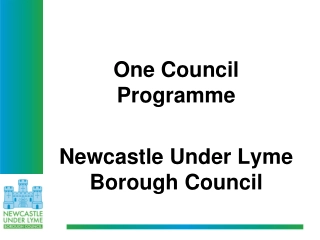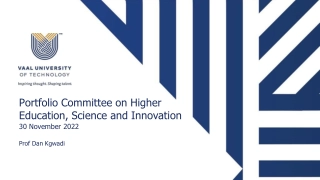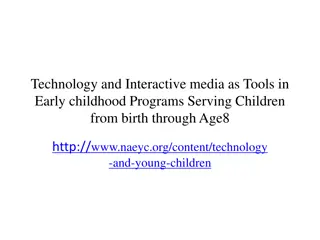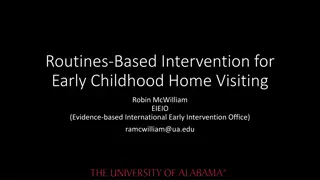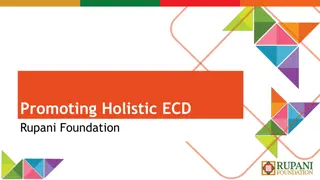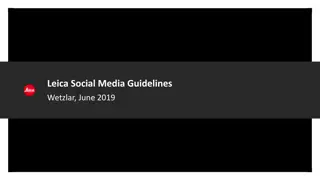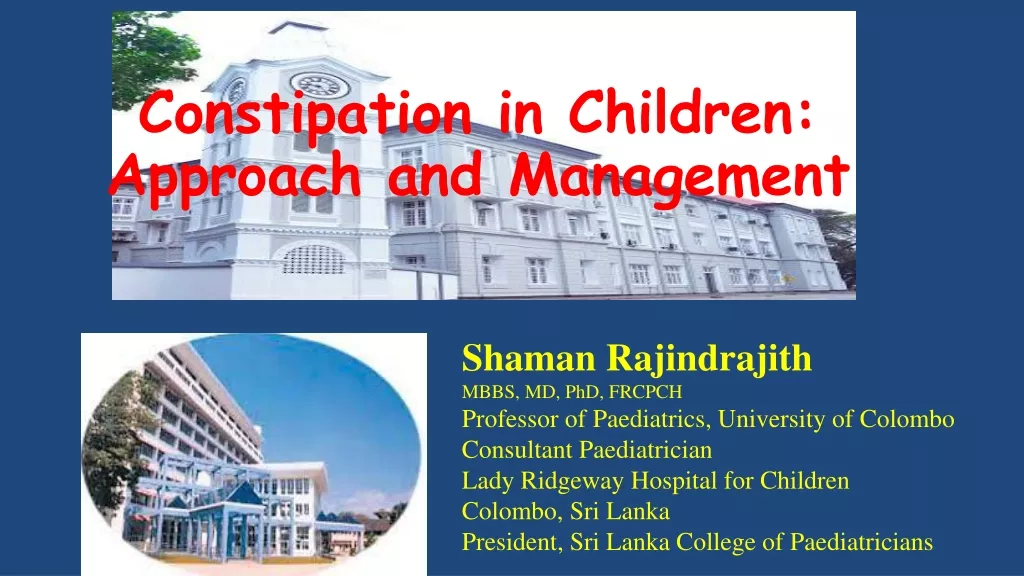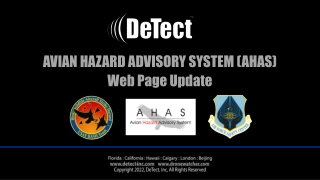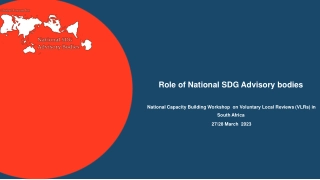Early Childhood Advisory Council (ECAC) Guidelines 2022
Explore the framework for designing an ECAC to support preschool programs, including operational considerations, purpose, and components such as community involvement and needs assessment.
Download Presentation
Please find below an Image/Link to download the presentation.
The content on the website is provided AS IS for your information and personal use only. It may not be sold, licensed, or shared on other websites without obtaining consent from the author. Download presentation by click this link. If you encounter any issues during the download, it is possible that the publisher has removed the file from their server.
Presentation Transcript
The Role and Design of an Early Childhood Advisory Council (ECAC) New Jersey Department of Education Division of Early Childhood Services 2022
Introduction The guidelines in this presentation offer a basic framework of essential elements necessary to effectively design and implement an Early Childhood Advisory Council or ECAC. An ECAC is an advisory group that supports the unique, particular needs of a district s high-quality preschool program. The following operational considerations are presented in a recommended sequential order. 2
Definition: Early Childhood Advisory Council (ECAC) Early childhood advisory council or ECAC means an advisory group of community stakeholders interested in the education and welfare of children in preschool through grade three that is convened by the school district (N.J.A.C.6A:13A-1.2). 3
ECAC Purpose and Applicability As required under N.J.A.C.6A:13A-4.6, the district board of education shall establish a preschool through grade three early childhood advisory council (ECAC) to review preschool program implementation of high-quality programs, serve as advisory support for the local school district s preschool program, and support transition as children move from preschool through grade three. Districts should convene the ECAC at times that are conducive to stakeholders participation in community-wide planning. 4
Integral Components A Community and Parent Involvement Specialist (CPIS) should be hired by each state funded district (in smaller districts, this position may be combined with other jobs such as a family liaison). The CPIS or family liaison oversees the district s family services under the direction of the Early Childhood Supervisor/Administrator and is responsible for: facilitating the community needs assessment, staffing and quarterly convening the Early Childhood Advisory Council, (ECAC), organizing and scheduling meetings, take notes, share notes with members, report back to the EC Supervisor,, and coordinating work with other school district professionals and community agencies and providers. 5
Community Needs Assessment (CNA) Districts should periodically conduct district-wide assessment of community needs and resources(N.J.A.C.6A:83.4(d)) in order for the ECAC to be productive, relevant and understand the issues and needs that affect the early childhood program. The CNA can serve as a springboard for which the ECAC can plan their participatory work focusing on prioritizing identified needs and available resources. The assessment can include a variety of sources including but not limited to an analysis of census data, surveys of the entire preschool community and focus groups reports. 6
Community Needs Assessment (CNA) Profile The following link outlines recommended elements for designing a well-defined Community Needs Assessment (CNA) that asks detailed and probing questions that yield usable information to identify the most relevant community problem(s), outstanding concerns or current issues that impact the preschool program and the families and children that are served. Community Assessment Profile (PDF): https://www.nj.gov/education/ece/savs/cna/profile.pdf 7
Community Needs Assessment (CNA) continued The next steps would be: Prioritize the concerns in order of urgency and importance for the ECAC to focus on. Identify the resources/personnel/stakeholders best equipped for resolving and assisting in remediating these problems, concerns and issues. Reach out to those stakeholders who can provide support and resources to address the identified issues. o These are the stakeholders who should, upon their agreement to be involved, be considered to fill the membership roster. 8
The Advisory Council membership is required by code to include representatives of the following groups: Contracting private providers if applicable Head Start agency if applicable School district personnel Parents Community stakeholders District community parent involvement specialist (CPIS) 9
The Advisory Council might include, if applicable, representatives of the following groups: Local health/social service agencies Early intervention services Business community Municipal government Higher education NJ Council for Young Children County Councils Philanthropic community Child/family advocates DHS managing agency (Family Outreach Program) Medical and dental services Houses of worship Kindergarten/1st grade teacher(s) Other community-based group members added as needed 10
Suggested Responsibilities of the Council (include but are not limited to): Participate in obtaining specific community needs and resources, including facilities, as they pertain to the implementation of high-quality preschool services. Serve as the conduit between community needs and resources Ensure no duplication between other community/education councils, but rather alignment and coordination Participate in the development of the District Operational Plan as organized by the district preschool leadership. Review and comment on the draft of the Three Year and Annual Operational Plan update. Review and comment on preschool budgets proposed by the district and the district self-assessment. 11
Structure and Operations: Meet at least quarterly; Elect its own leadership and adopt its own bylaws; Be led by elected chair representative (CPIS) and one co-chair community representative; Concentrate on preschool as well as the preschool through third grade continuum; Design an evaluation method to assess the efficacy of the ECAC in meeting their goals and objectives 12
Structure and Operations continued: Create sub-groups to work on issues relevant to their expertise. The main stakeholder group and sub-groups work independently and in tandem on identified needs and projects. The ECAC is most effective when working collaboratively across state agencies, and with the insight and input from the local level. 13
Thank You New Jersey Department of Education Website http://www.state.nj.us/education/ 14





